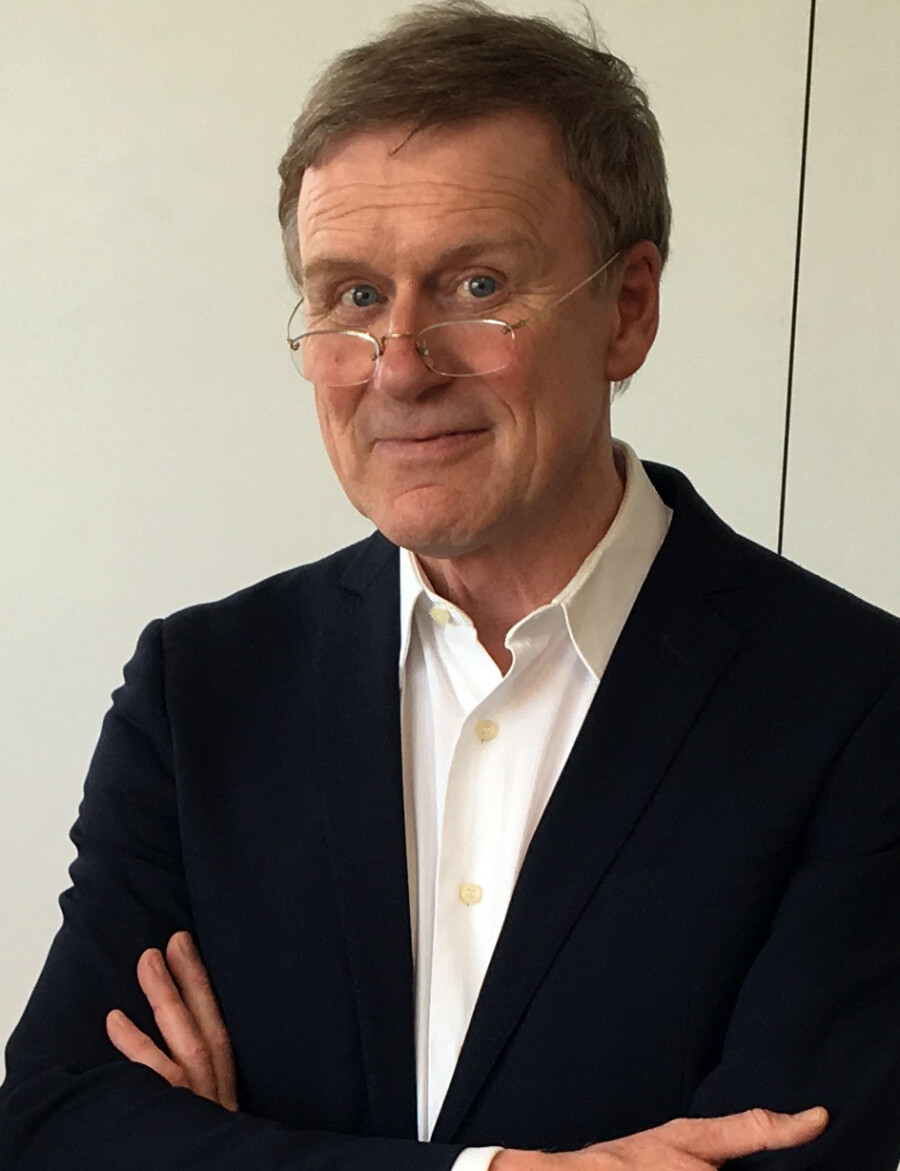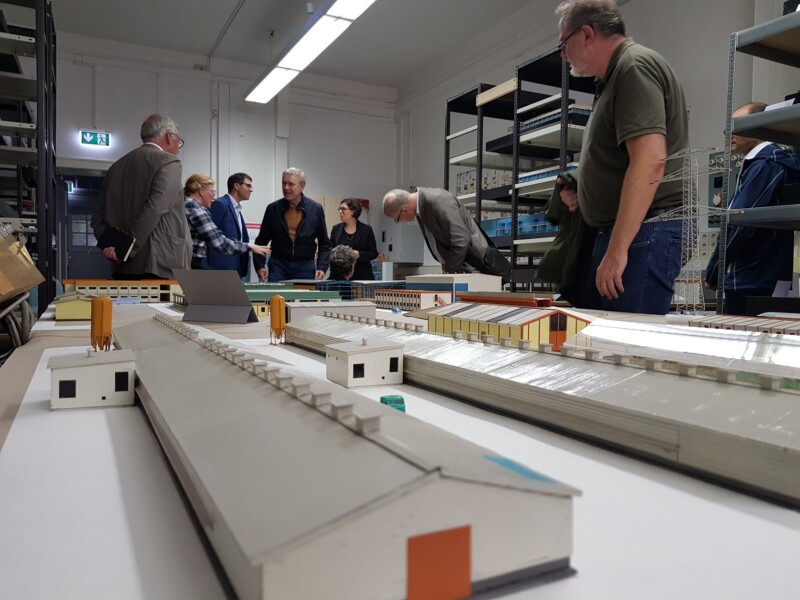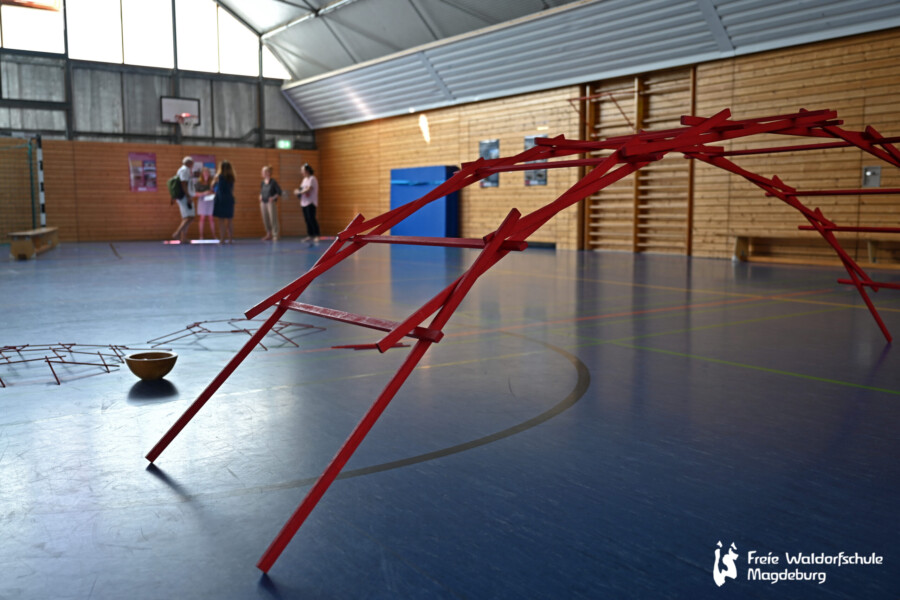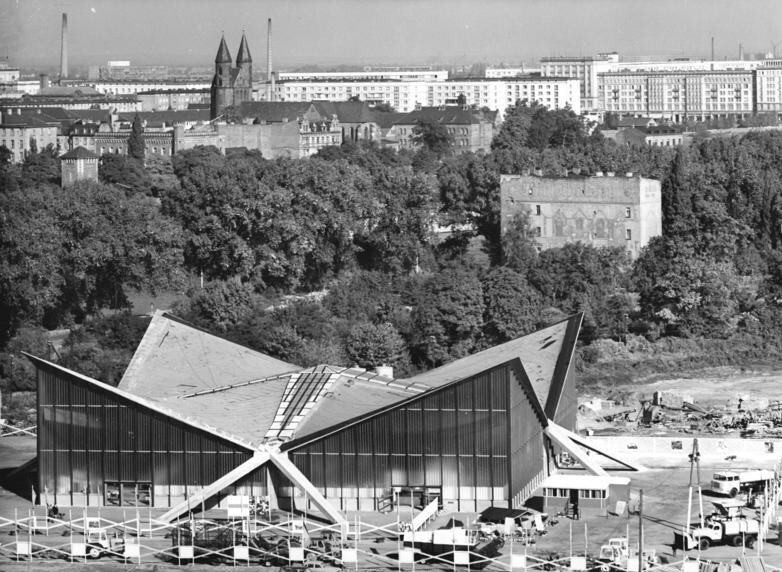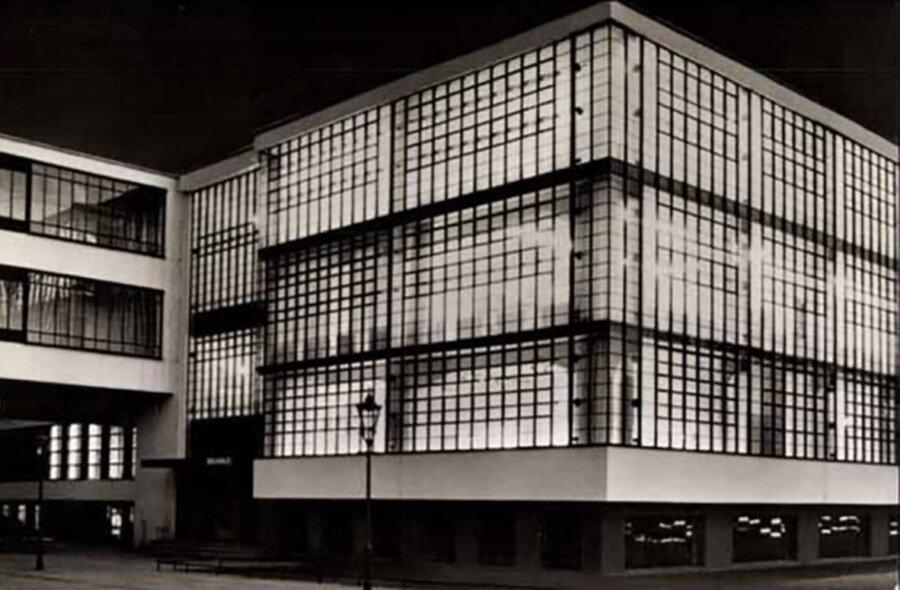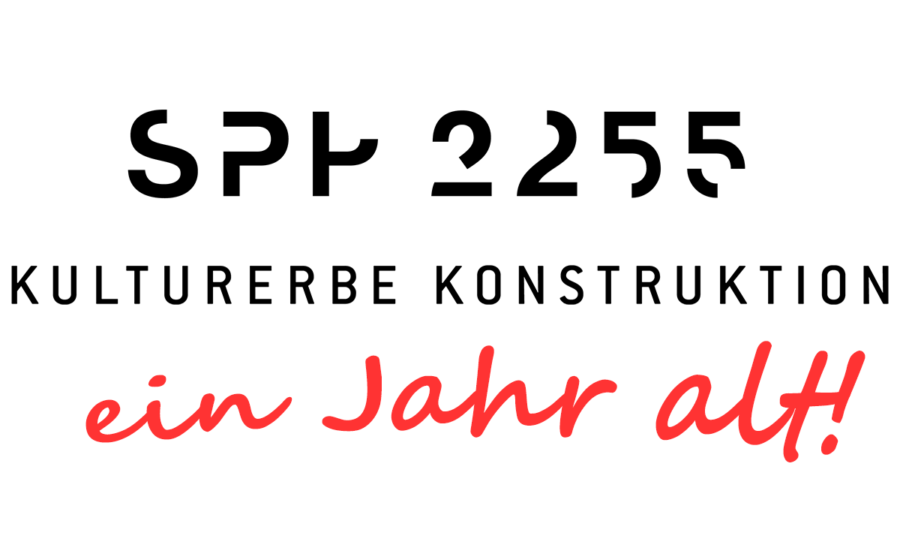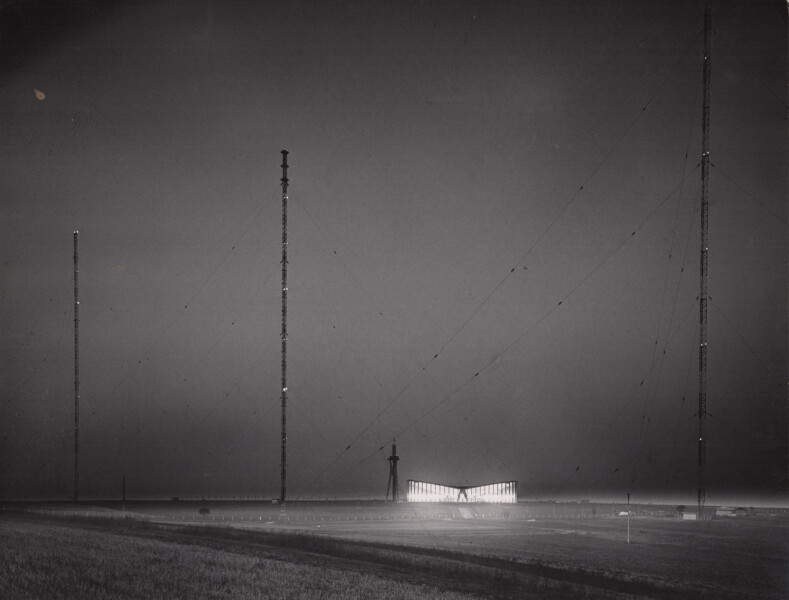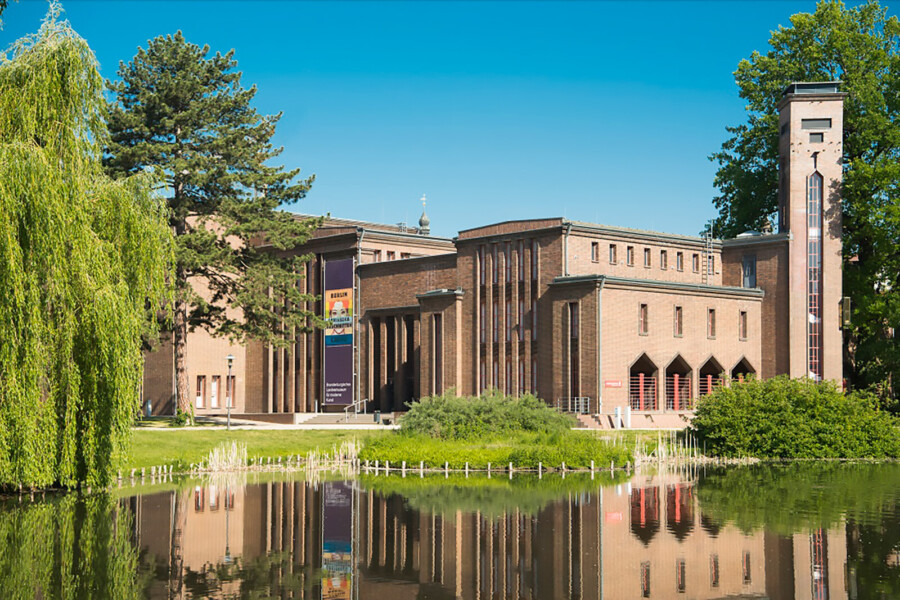Publications
- Eiserne Eremitage. Bauen mit Eisen im Russland der ersten Hälfte des 19. Jahrhunderts. 2 Bd. Berlin: Ernst & Sohn 2022 (mit Sergej F. Fedorov und Bernhard Heres).
- Die Sendehalle von Radio Europe 1 in Berus. (Historische Wahrzeichen der Ingenieurbaukunst in Deutschland, Bd. 28) Berlin: Bundesingenieurkammer 2021 (mit Bernard Espion).
- Ingenieurbauführer Berlin. Petersberg: Michael Imhof Verlag 2020 (mit Roland May und Hubert Staroste).
- Vom Wert des Weiterbauens. Konstruktive Lösungen und kulturgeschichtliche Zusammenhänge. (Kulturelle und technische Werte historischer Bauten, Bd. 4) Basel: Birkhäuser 2020 (Hg. mit Eva-Maria Froschauer, Luise Rellensmann und Albrecht Wiesener).
- Groß Bauen. Großbaustellen als kulturgeschichtliches Phänomen. (Kulturelle und technische Werte historischer Bauten, Bd. 1) Basel: Birkhäuser Verlag 2018 (Hg. mit Klaus Rheidt).
- Alltag und Veränderung – Praktiken des Bauens und Konstruierens. Tagungsband der 2. Jahrestagung der Gesellschaft für Bautechnikgeschichte, 23.-25. April 2015, Innsbruck (Schriftenreihe der Gesellschaft für Bautechnikgeschichte, Bd. 1.) Dresden: Thelem 2017 (Hg. mit Klaus Tragbar, Christoph Rauhut, Torsten Meyer und Christina Krafczyk)
- Das Neue Museum Berlin. (Historische Wahrzeichen der Ingenieurbaukunst in Deutschland, Bd. 15) Berlin: Bundesingenieurkammer 2014.
- Die Großmarkthalle Leipzig (Historische Wahrzeichen der Ingenieurbaukunst in Deutschland, Bd. 14) Berlin: Bundesingenieurkammer 2013 (mit Roland May und Jürgen Stritzke).
- Die Fleischbrücke in Nürnberg (Historische Wahrzeichen der Ingenieurbaukunst in Deutschland, Bd. 9) Berlin: Bundesingenieurkammer 2011 (mit Christiane Kaiser).
- Proceedings of the 3rd International Congress on Construction History, BTU Cottbus, May 20-24, 2009. 3 vol. (Hg. mit Karl-Eugen Kurrer und Volker Wetzk).
- Technik und Verantwortung im Nationalsozialismus. (Cottbuser Studien zur Geschichte von Technik, Arbeit und Umwelt, Bd. 25). Münster: Waxmann 2004. (Hg. mit Torsten Meyer)
- Konstruktion als Kunstwerk. Bauen mit Eisen in Berlin und Potsdam 1797-1850. Berlin: Gebr. Mann 1995.
- Ingenieurbauführer Berlin. Eine Entdeckungsreise. In: BK konstruktiv (2020), H. 4, S. 11-17.
- Engineer’s art or art of engineering? Thinking about the term Ingenieurbaukunst. In: Bundesingenieurkammer (Hg.): Ingenieurbaukunst. Engineering Made in Germany. Berlin: Ernst & Sohn 2020, S. 10-15.
- Ingenieurbaukunst. Gedanken über einen nur scheinbar selbstverständlichen Begriff. In: Bundesministerium des Innern, für Bau und Heimat, Bundesingenieurkammer (Hg.): Ingenieurbau in Deutschland 2020. Staatspreis. Berlin 2020, S. 12-17.
- Lust auf mehr. Gedanken zur Zukunft des Konstruktionssprachenmodells im Rückblick auf die Tagung. In: May, R. et al: Konstruktionssprachen. Überlegungen zur Periodisierung von Bautechnikgeschichte. (Kulturelle und technische Werte historischer Bauten, Band 5). Basel: Birkhäuser 2020, S. 253-256.
- Von der Notwendigkeit des Weiterbauens – und warum es im Brückenbau anscheinend so schwierig ist. In: Froschauer, E. et al (Hg.): Vom Wert des Weiterbauens. Konstruktive Lösungen und kulturgeschichtliche Zusammenhänge. (Kulturelle und technische Werte historischer Bauten, Band 4). Basel: Birkhäuser 2020, S. 117-130.
- Geschichte für Ingenieure? In: Beratende Ingenieure (2019), H. 5, S. 21-23.
- Schwingungsbasiertes Spannungsidentifikationsverfahren für fachwerkartige Eisen- und Stahlkonstruktionen. In: Stahlbau 88 (2019), H. 8, S. 726-733 (mit Mai Häßler und Volkmar Zabel).
- Die eisernen Dächer und Decken der Eremitage in St. Petersburg. Konstruktion, Bemessung und Legitimation im frühen Stahlbau. In: Stahlbau 88 (2019), H. 8, S. 734-743.
- The metal roof truss of the Pantheon’s portico in Rome – 152 tonnes of bronze. In: Construction History Journal 33 (2018), pp. 1-22 (mit Dorothee Heinzelmann, Michael Heinzelmann).
- Construction History in Germany. In: Antonio Becchi et al (eds.): L’Histoire de la construction / Construction History. Relevé d’un chantier européen / Survey of a European Building Site. Editions Classiques Garnier, Paris, 2018. pp. 195-246 (mit Karl-Eugen Kurrer).
- ‚decora inutilia‘ – Das antike Bronzedachwerk der Vorhalle des Pantheons in Rom. In: Mitteilungen des Deutschen Archäologischen Instituts Römische Abteilung. Bd. 124 (2018), S. 47-84 (mit Dorothee und Michael Heinzelmann).
- The roof of the Marble Palace in Saint-Petersburg: A structural iron ensemble from the 1770s. In: Wouters, I. et al (eds.): Building Knowledge, Constructing Histories. Proceedings of the Sixth International Congress on Construction History (6ICCH), July 9–13, 2018. CRC Press, Brüssel 2018, S. 809–817 (mit Aleksandra Kosykh und Konrad Frommelt).
- Les charpentes métalliques du Palais de l’Ermitage à Saint-Pétersbourg (1838-52). In: Espion, B. et al (eds.), Patrimoines de fonte, fer et acier. Architectures et ouvrages d’art. Bruxelles: Comité Patrimoine et Histoire de la FABI 2018, S. 138 – 147.
- Tüfteln – Testen – Besser machen. Die Großbaustelle Eremitage um 1840. In: Rheidt, K.; Lorenz, W. (Hg.): Groß Bauen. Großbaustellen als kulturgeschichtliches Phänomen. (Kulturelle und technische Werte historischer Bauten, Band 1). Basel: Birkhäuser Verlag, 2018, S. 133-146 (mit Bernhard Heres).
- What is construction history? In: Pelke, E.; Brühwiler, H. (eds.): Engineering History and Heritage Structures – Viewpoints and Approaches (Structural Engineering Documents 15). Zürich: IABSE Publications 2017, pp. 11-12.
- Steel viaduct refurbishment inspired by the original structure and its history. In: Pelke, E.; Brühwiler, H. (eds.): Engineering History and Heritage Structures – Viewpoints and Approaches (Structural Engineering Documents 15). Zürich: IABSE Publications 2017, pp. 173-178.
- Finite Element Model Calibration of a Historic Wiegmann–Polonceau Truss Based on Experimental Modal Parameters. In: Conte, P. et al. (eds.): Experimental Vibration Analysis for Civil Structures. Testing, Sensing, Monitoring, and Control. (Lecture Notes in Civil Engineering 5). Cham: Springer International Publishing 2017, pp. 212-224 (mit Mai Hoa Luong, Rolf G. Rohrmann, Volkmar Zabel und Samir Samir).
- ‚Vom Nutzen und Nachtheil der Historie für das Leben‘ – Geschichte für Bauingenieure? In: Festschrift Zehn Jahre Historische Wahrzeichen der Ingenieurbaukunst in Deutschland. Berlin: Bundesingenieurkammer 2017, S. 36-49; auch veröffentlicht in: Deutsches Ingenieurblatt (2017), H. 12, S. 46-52.
- Peking, Volksrepublik China. Der sog. Crystal Palace in der verbotenen Stadt. Bericht über die Summer School 2016. In: e-Forschungsberichte, Deutsches Archäologisches Institut, Ausgabe 2, 2017, S. 59-68 (mit Ulrike Wulf-Rheidt, Catharine Hof, Dietmar Kurapkat). https://publications.dainst.org/journals/efb/1989/6181
- Das Bronzedachwerk der Vorhalle des Pantheons in Rom. In: Koldewey-Gesellschaft (Hg.): Bericht über die 49. Tagung für Ausgrabungswissenschaft und Bauforschung vom 4. bis 8. Mai 2016 in Innsbruck. Dresden: Thelem 2017, S. 148-155 (mit Dorothee und Michael Heinzelmann).
- Bautechnikgeschichte in Deutschland. In: Bautechnik 94 (2017), H. 5, S. 274-294 (Karl-Eugen Kurrer).
- Ingenieurbaukunst: Heimkehr. Aufbruch. (Vortrag zum Schinkelfest 2015) In: Restaurator im Handwerk (2016), H.3, S. 66-70.
- The Demidov Ironworks In Nevyansk (Ural Mountains) – Iron Structures In Building From The First Half Of The 18th Century. In: Bowen, B.; Friedman, D.; Leslie, Th.; Ochsendorf, J.: Proceedings of the 5th International Congress on Construction History, Chicago, June 3-7, 2015, Chicago: Construction History Society of America 2015, vol.2, pp. 505-517 (mit Bernhard Heres).
- Ingenieurbaukunst: Heimkehr. Aufbruch. (Vortrag zum Schinkelfest 2015) In: Baukammer Berlin. Nachrichten für die im Bauwesen tätigen Ingenieure. 2015, H. 2, S. 47-51.
- Construction History in Germany. In: Becchi, A.; Carvais, R.; Sakarovitch, J. (dir.): Histoire de la construction. Un méridien européen / Construction History. A European Meridian. Paris: Association francophone d’histoire de la construction 2015. S. 141-176 (mit Karl-Eugen Kurrer). http://www.histoireconstruction.fr/rapport2015
- Denkmäler aus Eisen und Stahl – ‚Authentische Mängel‘ und ingeniöse Strategien.“ In: LVR-Amt für Denkmalpflege im Rheinland (Hg.): Denkmäler aus Eisen und Stahl. Dokumentation zum 18. Kölner Gespräch zu Architektur und Denkmalpflege in Duisburg, 19. Mai 2014. Köln 2014. S. 51-70.
- Yorckbrücken Berlin. Revitalisierung eines denkmalgeschützten Brückenensembles mit anprallgefährdeten Gussstützen. In: Stahlbau 83 (2014), H. 2, S. 83-95.
- 3rd European Summer School on Construction History. In: BTU News Nr. 38, 10 (2013) S. 31 (mit Sabine Kuban).
- Franz Dischinger – Visionär des Brückenbaus. In: Curbach, M. (Hg.): Tagungsband 23. Dresdner Brückenbausymposium, 11./12. März 2013, Dresden: Institut für Massivbau der TU Dresden 2013, S. 101-128 (mit Roland May).
- Karl-Eugen Kurrer 60 Jahre. In: Stahlbau 81 (2012), S. 731-732, außerdem erschienen in: Bautechnik 89 (2012), S. 659-660, und in: Beton- und Stahlbetonbau 107 (2012), S.645-646.
- CH.ESS: European Summer Schools on Construction History. In: Carvais, R. et al. (Ed.): Nuts & Bolts of Construction History (Proceedings of the 4th International Congress on Construction History, Paris, July 3-7, 2012), Paris: Picard, 2012, vol. 1, pp. 105-112 (mit Roland May).
- Strukturfindungsprozesse der Spätrenaissance – Planung und Bau der Fleischbrücke Nürnberg (1596-1598). In: Bautechnik 89 (2012), H. 2, S.119-127 (mit Christiane Kaiser).
- Stahlbau unter Denkmalschutz – Grundinstandsetzung von Viadukt und Bahnhöfen der Hochbahnlinie U2 in Berlin- Prenzlauer Berg. Stahlbau 80 (2011), H. 6, S. 419-427 (mit Michael Fischer).
- Stahlbau unter Denkmalschutz. Editorial als Herausgeber. Stahlbau 80 (2011), H.6, S. 377-378.
- Современные музеи в мировом культурном наследии – конструктивное особенности и конструктивные решения. (Modern Museums in World Heritage Monuments – Structural challenges, structural solutions). Internationale Konferenz „Museums of the 21st century – Restoration, reconstruction, renovation“, Staatliche Eremitage Sankt Petersburg. 20.-22.10. 2008. St. Petersburg, The State Hermitage Publishers 2010. S. 28–36.
- Kernform und Kunstform – Preußische Konstruktionskunst im Zeichen der Industrialisierung. In: Staatliche Museen zu Berlin Stiftung Preußischer Kulturbesitz; Bundesamt für Bauwesen und Raumordnung; Landesdenkmalamt Berlin (Hg.): Das Neue Museum Berlin. Konservieren, Restaurieren, Weiterbauen im Welterbe. Leipzig: E.A. Seemann 2009, S. 38-43.
- Bausystem und Tragwerk – Stahl. In: Wüstenrot Stiftung (Hg.): Beiträge zur Instandsetzung von Baudenkmalen des 20. Jahrhunderts. http://www.denkmalpraxismoderne.de/handbuch_stahl_lorenz.php
- Third International Congress on Construction History, Cottbus 2009. Outlook. In: Steel Construction 1 (2008), Iss. 1, pp. 89-90 (mit Volker Wetzk).
- 3rd International Congress on Construction History, Cottbus 2009 – Call for Papers. In: Bautechnik 85 (2008), H. 4, S. 302-303 (mit Volker Wetzk).
- ‚Kunst’ lässt sich verkaufen. Oder geht es um mehr bei den ‚Wahrzeichen der Ingenieurbaukunst’?“. In: Bundesingenieurkammer (Hg.): Ingenieurbaukunst in Deutschland – Jahrbuch 2007/2008. Hamburg: Junius 2007, S. 162-171.
- 5th International Conference on Structural Analysis of Historical Constructions in New Delhi. Bautechnik 84 (2007), H. 2, S.146-147.
- From Stories to History, from History to Histories: What Can Construction History Do? In: Construction History Journal 21 (2006), pp. 25-36.
- Von Geschichten zur Geschichte, von Geschichte zu Geschichten: Was kann Bautechnikgeschichte? In: Meyer, T.; Popplow, M. (Hg.): Technik, Arbeit und Umwelt in der Geschichte. Günter Bayerl zum 60. Geburtstag. Münster: Waxmann 2006, S. 221-237.
- Third International Congress on Construction History – May 2009, Cottbus, Germany. In: Construction History Society Newsletter no.73 (2006), pp. 9-10.
- Iterative system identification for the assessment and retrofitting of a historical pre-stressed concrete bridge in Berlin. In: Lourenço, P.B. et al. (Ed.): Proceedings of the 5th International Conference on Structural Analysis of Historical Constructions, New Delhi, Nov 6-8, 2006, Macmillon Publishers 2006, vol.1, pp. 617-624.
- Von der großen Belagerung der Stadt Cottbus. In: Brune, W.; Junker, R.; Pump-Uhlmann, H. (Hg.): Angriff auf die City. Düsseldorf: Droste Sachbuch 2006, S. 176-199.
- Archäologie des Konstruierens – Untersuchungen zur Entstehung von Konstruktionssprachen an den Eisentragwerken der Eremitage St. Petersburg. In: Forum der Forschung 19 (2006), S. 163-170. (mit Bernhard Heres).
- Laptop im Chiton – Ein stählernes Dach für die Walhalla. In: Baumüller, B.; Krestin, S. (Hg.): Zwischen Traum und Wissenschaft – Aspekte zum Zeitalter der Romantik. Tagung an der BTU Cottbus, 11.-13. Oktober 2002. Cottbus: Regia, 2005, S. 70-78.
- Archäologie des Konstruierens – Eremitage, Walhalla, Neues Museum Berlin. In: Bundesingenieurkammer (Hg.): Ingenieurbaukunst in Deutschland – Jahrbuch 2005/2006. Hamburg: Junius 2005, S. 172-181.
- Von mancherlei Schwierigkeit, einer historischen Konstruktion gerecht zu werden. Anmerkungen zu neueren Äußerungen über die Schutzkuppel von St. Nikolai. In: Jahrbuch der Stiftung preußische Schlösser und Gärten Berlin Brandenburg. Bd. 5. Berlin: Akademie-Verlag 2005, S. 127–149.
- The Challenge of Creativity – Learning from History?” In: CEB-FIP (Ed.): Proceedings of the fib (Federation Internationale du Beton) Symposium: Concrete Structures: the Challenge of Creativity. Avignon, April 26-28, 2004, pp. 15-24.
- Technik und Verantwortung im Nationalsozialismus. Einführung als Herausgeber im gleichnamigen Buch. (Cottbuser Studien zur Geschichte von Technik, Arbeit und Umwelt, Bd. 25). Münster: Waxmann Verlag GmbH, 2004, S. 1-18 (mit Torsten Meyer).
- Von den Mühen des Alltags. Ein Eisenbeton-Skelett von 1911 in Berlin. In : Hassler, U., Schmidt, H. (Hg.): Häuser aus Beton. Vom Stampfbeton zum Grosstafelbau. Tübingen, Berlin: Ernst Wasmuth 2004, S. 180 190.
- Stadtpromenade Cottbus. Ein Interview. Bauwelt 95 (2004), H. 11, S. 34-35
- „Новые металлические Конструкции Лео фон Кленце (заметки о работах архитектора с точки зрения инженера)“ In: Новый Эрмитаж. 150 лет со дня создания. Sankt Petersburg: Verlag der Staatlichen Eremitage 2003, S. 12-14.
- Lagersanierung des Hochbahn-Viaduktes der U-Bahn-Linie 2 in Berlin-Prenzlauer Ber. In: BAM (Hg.): Bericht zur Tagung „Sonderkapitel aus dem Brücken- und Ingenieurbau“. Okt. 2003, S. 59-65.
- ‚Das Schwierige hingegen, die Wirklichkeit’. Bildung und Ausbildung im Bauingenieurwesen im Umbruch. In: Bundesingenieurkammer (Hg.): Ingenieurbaukunst in Deutschland – Jahrbuch 2003/2004. Hamburg: Junius 2004, S. 184-193.
- History of construction: An estimable resource in the actual crisis of civil engineering? In: Huerta, S. (Ed.): Proceedings of the 1st International Congress on Construction History, Madrid, Jan 20-24, 2003, vol. 1, pp. 31-41.
- ‚In neuester Zeit hat der Begriff Barbarei einen ganz anderen Charakter gewonnen‘. Less is more. In: Architekten- und Ingenieurverein e.V. Osnabrück, Jahresbericht 2002. S. 8-13.
- Ein Haus ist kein Auto – Bauen im Bestand. In: Schunck, E. (Hg.): Beiträge zur Geschichte des Bauingenieurwesens, Bd. 12, München 2002, S. 39-57.
- Otto – find’ ich gut! Oder: Von der Übergabe der Stadt Cottbus. Kopfbrot (Studentische Zeitung in Cottbus), Feb. 2002. S. 12.
- Wenn Bauingenieure lesen … . Forum der Forschung 6 (2002), H. 13, S. 37-42.
- 100 Jahre U-Bahn in Deutschland. In: Stahlbau 71 (2002), H.2, S.77-78. (Editorial als Herausgeber, mit Klaus Brandes).
- 100 Jahre U-Bahn in Deutschland. Zur Planung, Gestaltung und Bedeutung des Stahlviadukts der Linie 1 in Berlin. In: Stahlbau 71 (2002), H.2, S.79-87.
- 100 Jahre U-Bahn in Deutschland. Konstruktive Bestandsaufnahme und meßwertbasierte Tragwerksmodellierung eines Stahlviadukts der Linie 1 in Berlin. In: Stahlbau 71 (2002), H. 2, S. 88-96. (mit Michael Fischer).
- Building with Iron in Nineteenth Century Bavaria: The Valhalla Roof Truss and its Architect Leo von Klenze. In: Construction History Journal 17 (2001), pp. 55-74. (mit Annegret Rohde).
- Von Tugend, Verantwortung und Qualität – Rede gegen das Verschwinden des Ingenieurs. In: Bundesingenieurkammer (Hg.): Ingenieurbaukunst in Deutschland. Jahrbuch 2001. Hamburg: Junius 2001, S. 112-121.
- Laptop im Chiton – Klenze, der Ingenieur? In: Nerdinger, W. (Hg.): Leo von Klenze. Architekt zwischen Kunst und Hof. München: Prestel 2000, S.128-143.
- Denkmalschutz für einen Kuhstall? Ein Stahl- und Betonbau von Karl Janisch für den Gutshof Biesdorf. In: Bezirksamt Marzahn (Hg.): Die Denkmale in Berlin Bezirk Marzahn. 2001, S.90-95.
- Classicism and High Technology – the Berlin Neues Museum. In: Construction History Journal 15 (2000), pp. 39-55.
- Innovation und Vergessen. Eine Borsig-Halle in Eberswalde. In: Schwarz, K. (Hg.): Von der Bauakademie zur Technischen Universität Berlin. Geschichte und Zukunft. Berlin: Ernst & Sohn 1999, S. 557-563.
- Der Stil des Steins gepaart mit dem Stil des Stahls. Zur Baugeschichte der U1. In: Wachter, G.; Jäger, B. (Hg.): Abriß oder Ertüchtigung. Berlin: Vice Versa 1999, S. 5-54. (mit Sabine Bohle-Heintzenberg).
- Ertüchtigung statt Abriß! In: Wachter, G.; Jäger, B. (Hg.): Abriß oder Ertüchtigung. Berlin: Vice Versa 1999, S. 93-112. (mit Bernhard Szafranski).
- ‚Von der primitiv-raffinierten Großartigkeit gewisser Ingenieurwerke‘. Bahnhöfe für Berlin. In: Schunck, E. (Hg.): Verkehrsbauten. Beiträge zur Geschichte des Bauingenieurwesens, Bd. 10. München 1999, S. 5-24.
- The Berlin Neues Museum – a microcosm of Prussian building technology against the background of beginning industrialization. In: Brebbia, C.A.; Jäger, W. (eds.): Proceedings of the 6th International Conference Structural Studies, Repairs and Maintenance of Historical Buildings, Dresden 1999, pp. 389-398.
- Brücken und Brückenbauer – Haltungen zum Konstruieren. In: Braunschweigische Wissenschaftliche Gesellschaft (Hg.): Jahrbuch 1998. Braunschweig: J. Cramer 1999, S. 105-132.
- Das Finowtal im Barnim. Wiege der brandenburgisch-preußischen Industrieentwicklung. Berlin: Transit 1998. (mit Carsten Seifert, Harald Bodenschatz).
- Innovation und Vergessen. Die Knüppelhalle der ehemaligen Eisenspalterei bei Eberswalde. In: Forum der Forschung 4 (1998), H. 6, S. 65-71. ISSN 0947-6989
- Die Galerie des Machines und ihre Vorgänger. In: Schunck, E. (Hg.): Hallen. Beiträge zur Geschichte des Bauingenieurwesens, Bd. 8, München 1997, S. 29-50.
- 200 Jahre Stahlbau in Berlin. Zum Umgang mit Altbauten in Eisen und Stahl. (Editorial als Herausgeber). In: Stahlbau 66 (1997), H. 6, S. 289-290.
- 200 Jahre eisernes Berlin. Stahlbau 66 (1997), H. 6, S. 291-310.
- ‚Die Formel taugt nichts, sie ist über zwei Zoll lang’. Zur Kunst des Konstruierens in Preußens frühem Eisenbau. In: Knobloch, E. (Hg.): Wissenschaft – Technik – Kunst. Wiesbaden: Harrassowitz 1997, S. 17-36.
- Die Software im Denkmal. Ressource für die Ingenieure von morgen? In: Hassler, U.; Petzet, M. (Hg.): Das Denkmal als Altlast. München: Lipp 1996, S. 70-76.
- Brandenburgisches Haus für Technikkultur – Ein Programm. Technische Universität Cottbus, Lehrstuhl Bautechnikgeschichte 1995.
- Der Blick des Produzenten. Zur Genealogie bautechnischen Zeichnens. In: Dresdner Geschichtsverein (Hg.): Dresdner Hefte 23 (1994), S. 39-44.
- ‚Architectur ist Construction‘. Schinkel und Borsig als Baukonstrukteure. In: Technikgeschichte 61 (1994), H. 4, S. 313-328.
- Stülers Neues Museum. Inkunabel preußischer Konstruktionskunst im Zeichen der Industrialisierung. In: Zentralinstitut für Kunstgeschichte (Hg.): Die Museen in Berlin. München: Deutscher Kunstverlag 1994, S. 99-112.
- 100 Jahre Forthbrücke. In: Bauingenieur 66 (1991), H. 9, S. 416-418.
- Ein Stück Konstruktionskultur. Das neue Gewächshaus in Kew bei London. In: Bauingenieur 66 (1991), H. 9, S. 411-412.
- Die Entwicklung des Dreigelenksystems im 19.Jahrhundert. In: Stahlbau 59 (1990), H. 1, S. 1-10.
- From hard to soft machines – Die Wiederentdeckung des Baumeisters. In: arch+ 102 (1990), H. 1, S. 60-63.
- Restaurierung des historischen Palmenhauses in den Royal Botanic Gardens in Kew bei London. In: Bauingenieur 64 (1989), H. 7, S. 325-326.
- Restaurierung eines denkmalgeschützten Gewächshauses in den Royal Botanic Gardens bei London. In: Bauingenieur 64 (1989), H. 7, S. 319-320.
- 150 Jahre Borsig. Beitrag zur Technikgeschichte des frühen Eisenbaus. In: Bauingenieur 63 (1988), H. 8, S. 375-384. Darüber hinaus zahlreiche Rezensionen in „Stahlbau“, “Der Bauingenieur”, „Technikgeschichte“, „Construction History Journal“ u.a.

